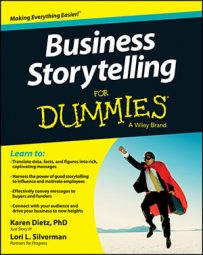You’ve whittled your business story’s themes down to the vital few, but they’re likely still too general. Now it’s time to figure out your story’s key message — what you want to leave people with that will move them to action and inspire them to do something different.
To do so, ask yourself the following questions and add your responses to the information you’ve already documented. If you’re working with someone else’s story, you may have collected their views on these when you asked reflective questions after listening to it. Compile their responses with yours:
What’s your goal in telling the story?
What do you like about the story? What draws you into it?
What does this story mean to you?
What did you learn or gain from this experience?
What understanding or meaning do you want others to have grasped?
What do you want the audience to believe after you share the story?
What do you want the audience to do after you share the story?
Afterward, read through all the information you’ve documented and the story one more time and identify patterns—information that’s mentioned over and over again. From these patterns, you’ll be able to choose the key message that captures a specific action you want people to immediately take after hearing the story.
The key message is the backbone of the story. Ultimately, you want people listening to the story to repeat both the story and its key message. So what are the qualities of a key message?
It’s a full sentence, not a bullet point.
It’s a statement, not a question.
It’s concise and memorable.
It’s confined to one significant point.
It’s affirmative, not negative.
It conveys a universal message: Everyone who comes in contact with the story is able to connect deeply with it.
Because the key message needs to create a solid, memorable takeaway, use techniques that advertisers employ to get you to quickly recall tag lines for companies (for example, Nike’s Just do it) and TV commercials that move you to buy an item.
If this sounds easy, in practice it isn’t. It can take a while to arrive at the perfect key message for a story. Sometimes you know the key message in a flash. Other times it gets altered and improved as you try it out. For now, decide on a key message so you can continue to work through the process of crafting a compelling story.
Plan to revisit the key message as you craft the more formally structured version of the story. It’s possible that the key message you thought was the right one needs to morph. Don’t worry if it does. Pay attention to how the key message changes and gets better over time.
What’s the use of a key message in story construction? Every part of the story you tell should reinforce it. This is how you avoid adding in too many details or getting sidetracked into other mini-connected side stories.

